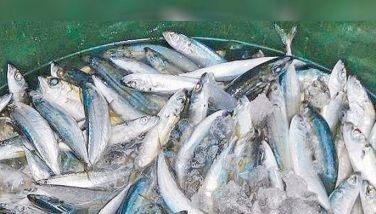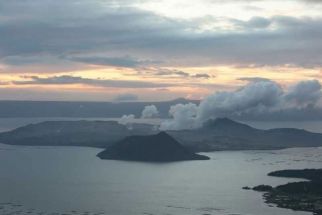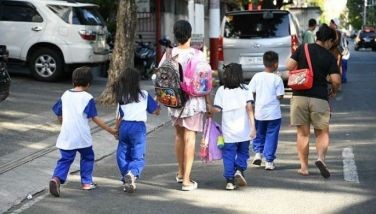After ‘Harurot,’ ‘Kabayan,’ ‘Onyok,’ ‘Pogi’ coming
August 1, 2003 | 12:00am
From Amang to Zigzag and beyond, the names of Philippine typhoons have all been set in place until 2016.
According to researchers at the Department of Science and Technology (DOST) and the Philippine Atmospheric, Geophysical and Astronomical Services Administration, the advance naming of future howlers was a result of the "Name a Bagyo" contest sponsored by PAGASA in 1999.
Victoria Bautista and Cheryl Berin of DOST-Science and Technology Institute and DOST-PAGASA, said the contest was a nationwide search for a new generation of tropical cyclone names, which yielded 140 new, non-gender biased local names of cyclones from more than 18,000 entries.
Thus, Harurot was already named even long before it could cut its swath of destruction in the northern part of the country a couple of weeks ago.
Before Harurot there was Gilas, Falcon, Egay, Dodong, Chedeng, Batibot, Amang. Afterwards there will be Ineng, Juaning, Kabayan, Lakay, Manang, Nina, Onyok, Pogi, Quiel, Roskas, Sikat, Tisoy, Ursula, Viring, Wang-wang, Yoyo, and Zigzag.
"Our ultimate aim of issuing local names is to inform national and local disaster coordinating councils and the public of the presence of such cyclones and immediately enable them to implement their disaster preparedness plan and undertake necessary precautions," Dr. Bernardo Soriano Jr., chief of PAGASA’s Atmospheric, Geophysical and Space Science Branch, said.
Soriano added that the names now being used, which will last until 2016, are the citizens’ choice since they came mostly from those who joined and won the contest.
The tropical cyclone naming system in the local scene has a bearing on the international coding system of the Typhoon Committee of the Economic and Social Commission for Asia and the Pacific and the World Meteorological Organization.
As a member of the typhoon committee, PAGASA complies with the naming scheme drafted in the 31st session of the committee held in the Philippines from Dec. 1 to 7, 1998.
PAGASA started using the new names under the scheme on Jan. 1, 2000.
Soriano stressed that the new naming scheme led to the standardization of the usage of names for tropical cyclones in the region. The Philippines contributed the names Bilis, Cimaron, Danas, Hagibis, Hagupit, Imbudo (Harurot’s international name), Lupit, Malakas and Talas, while neighboring countries also pitched in to complete the revised International Tropical Cyclone Names.
"These names are to be used by the typhoon committee members, which include the Philippines. More important, the scheme is expected to enhance the alertness of the people to an emerging tropical cyclone hazard," Soriano said.
But typhoon-naming wasn’t always this systematic.
Records show that before 1890, he world’s tropical cyclones were named arbitrarily.
It was before the end of the 19th century when an Australian weatherman, C. Wragge, started giving cyclones female names.
Naming of storms became so popular that air force and navy forecasters gave their wives and girlfriends the distinction of having storms named after them.
In the 1940s, a storm was named after President Harry Truman by the United States press while another was later named after his wife Bess.
A rare occurrence in 1946 had three storms developing simultaneously in the western North-Pacific basin where the Philippine territory is located.
Instead of names, all three were identified based on location, which caused confusion because the public could not identify which storm was being reported.
Early the next year after that rare case, weather forecasters decided to identify storms using names in alphabetical order.
The Philippine Weather Bureau adopted the system in 1963 by setting four groups of Filipino women’s nicknames ending in "ng" from A to Y, to name all tropical cyclones within the Philippine area of responsibility.
These four sets of names were then repeated every four years. Each group was also accompanied by an auxiliary list from A to G in the event that the number of typhoons occurring in a particular year exceed the number of letters in the Filipino alphabet.
According to researchers at the Department of Science and Technology (DOST) and the Philippine Atmospheric, Geophysical and Astronomical Services Administration, the advance naming of future howlers was a result of the "Name a Bagyo" contest sponsored by PAGASA in 1999.
Victoria Bautista and Cheryl Berin of DOST-Science and Technology Institute and DOST-PAGASA, said the contest was a nationwide search for a new generation of tropical cyclone names, which yielded 140 new, non-gender biased local names of cyclones from more than 18,000 entries.
Thus, Harurot was already named even long before it could cut its swath of destruction in the northern part of the country a couple of weeks ago.
Before Harurot there was Gilas, Falcon, Egay, Dodong, Chedeng, Batibot, Amang. Afterwards there will be Ineng, Juaning, Kabayan, Lakay, Manang, Nina, Onyok, Pogi, Quiel, Roskas, Sikat, Tisoy, Ursula, Viring, Wang-wang, Yoyo, and Zigzag.
"Our ultimate aim of issuing local names is to inform national and local disaster coordinating councils and the public of the presence of such cyclones and immediately enable them to implement their disaster preparedness plan and undertake necessary precautions," Dr. Bernardo Soriano Jr., chief of PAGASA’s Atmospheric, Geophysical and Space Science Branch, said.
Soriano added that the names now being used, which will last until 2016, are the citizens’ choice since they came mostly from those who joined and won the contest.
The tropical cyclone naming system in the local scene has a bearing on the international coding system of the Typhoon Committee of the Economic and Social Commission for Asia and the Pacific and the World Meteorological Organization.
As a member of the typhoon committee, PAGASA complies with the naming scheme drafted in the 31st session of the committee held in the Philippines from Dec. 1 to 7, 1998.
PAGASA started using the new names under the scheme on Jan. 1, 2000.
Soriano stressed that the new naming scheme led to the standardization of the usage of names for tropical cyclones in the region. The Philippines contributed the names Bilis, Cimaron, Danas, Hagibis, Hagupit, Imbudo (Harurot’s international name), Lupit, Malakas and Talas, while neighboring countries also pitched in to complete the revised International Tropical Cyclone Names.
"These names are to be used by the typhoon committee members, which include the Philippines. More important, the scheme is expected to enhance the alertness of the people to an emerging tropical cyclone hazard," Soriano said.
But typhoon-naming wasn’t always this systematic.
Records show that before 1890, he world’s tropical cyclones were named arbitrarily.
It was before the end of the 19th century when an Australian weatherman, C. Wragge, started giving cyclones female names.
Naming of storms became so popular that air force and navy forecasters gave their wives and girlfriends the distinction of having storms named after them.
In the 1940s, a storm was named after President Harry Truman by the United States press while another was later named after his wife Bess.
A rare occurrence in 1946 had three storms developing simultaneously in the western North-Pacific basin where the Philippine territory is located.
Instead of names, all three were identified based on location, which caused confusion because the public could not identify which storm was being reported.
Early the next year after that rare case, weather forecasters decided to identify storms using names in alphabetical order.
The Philippine Weather Bureau adopted the system in 1963 by setting four groups of Filipino women’s nicknames ending in "ng" from A to Y, to name all tropical cyclones within the Philippine area of responsibility.
These four sets of names were then repeated every four years. Each group was also accompanied by an auxiliary list from A to G in the event that the number of typhoons occurring in a particular year exceed the number of letters in the Filipino alphabet.
BrandSpace Articles
<
>
- Latest
- Trending
Trending
Latest
Trending
Latest
Recommended




























